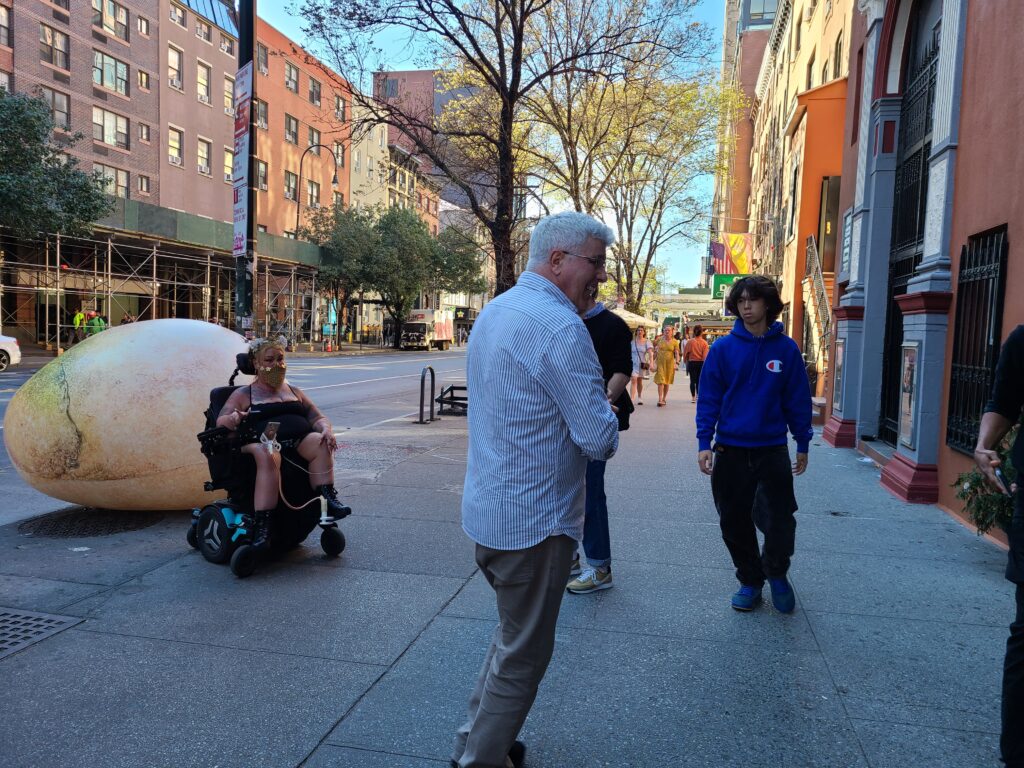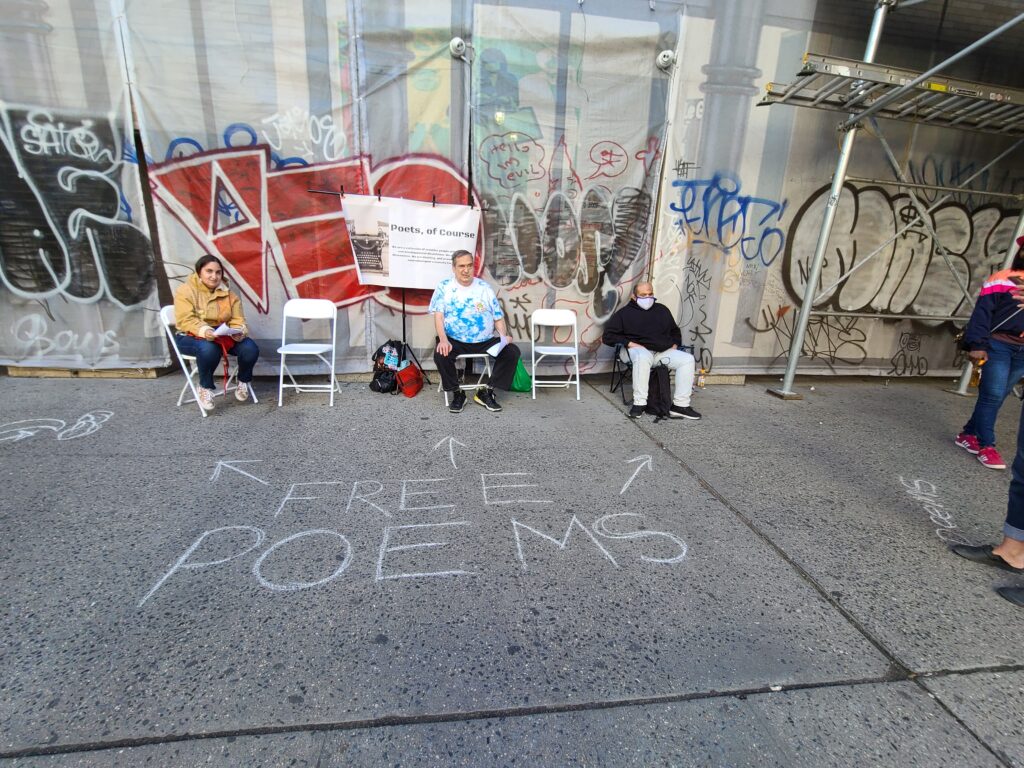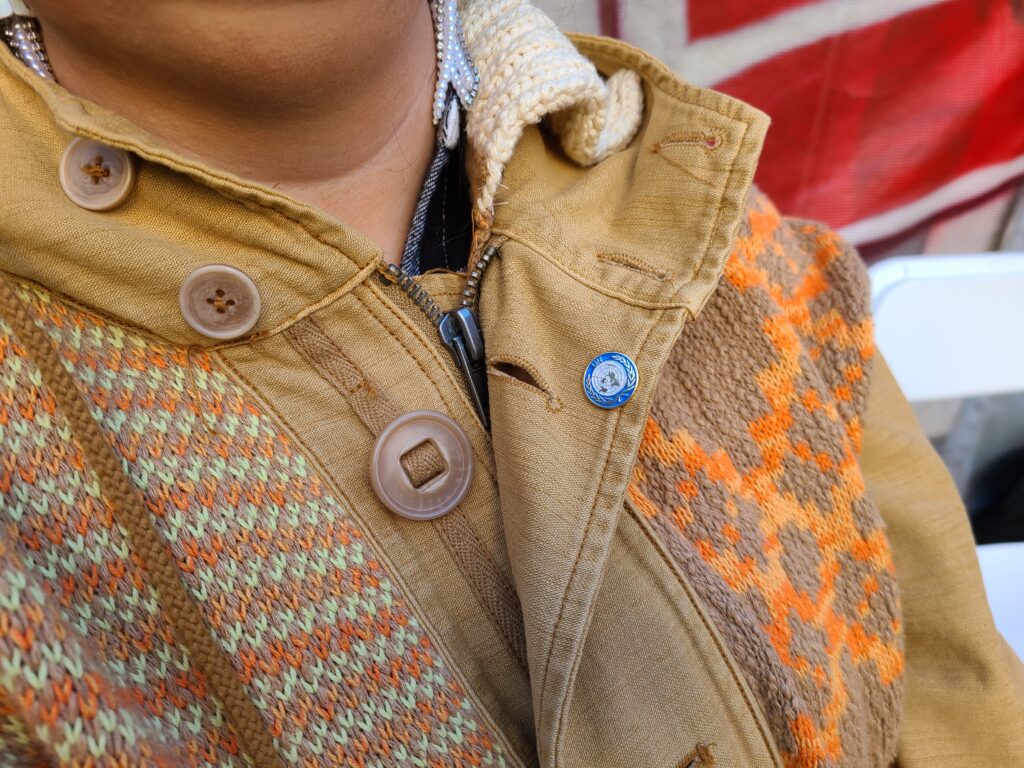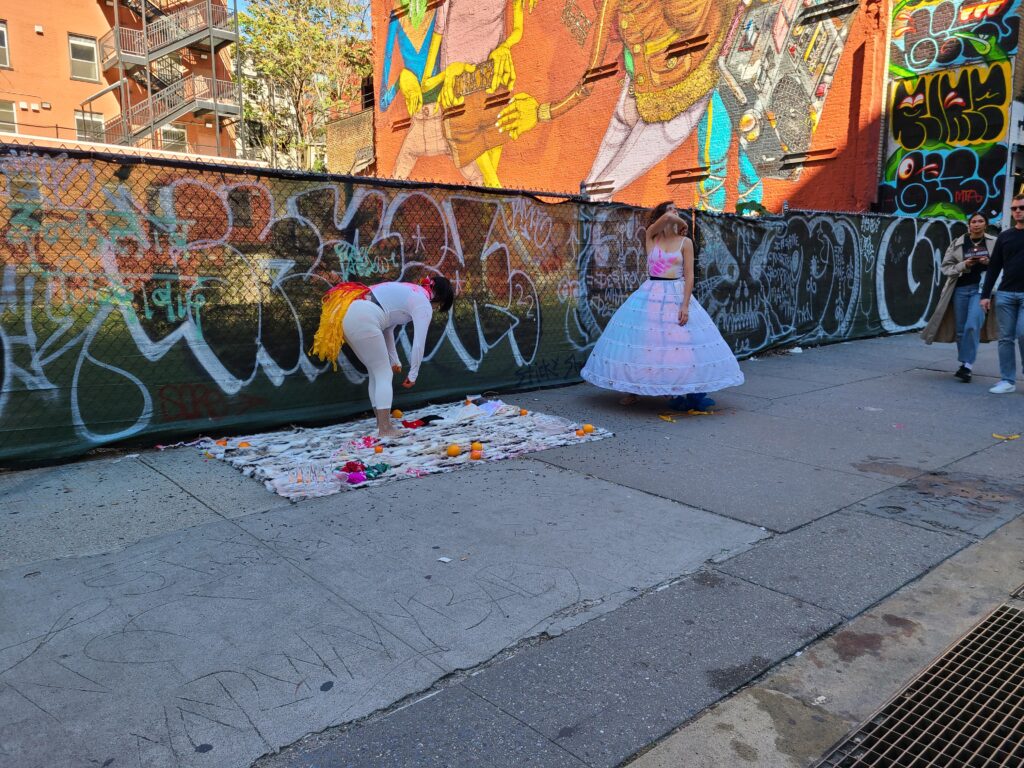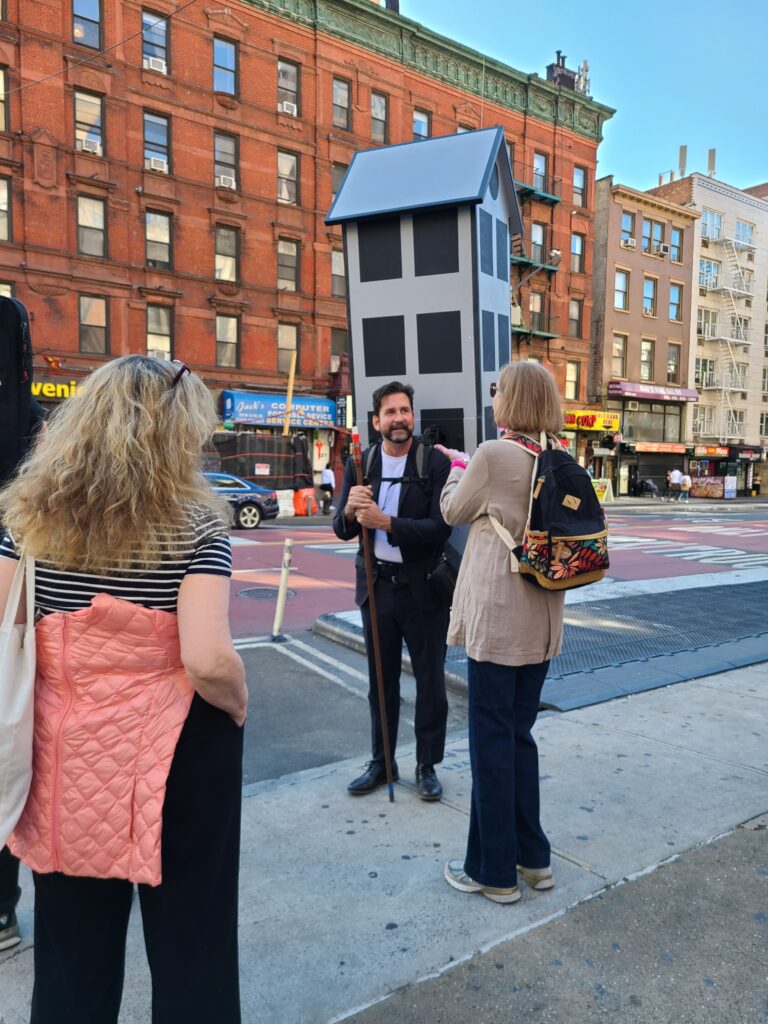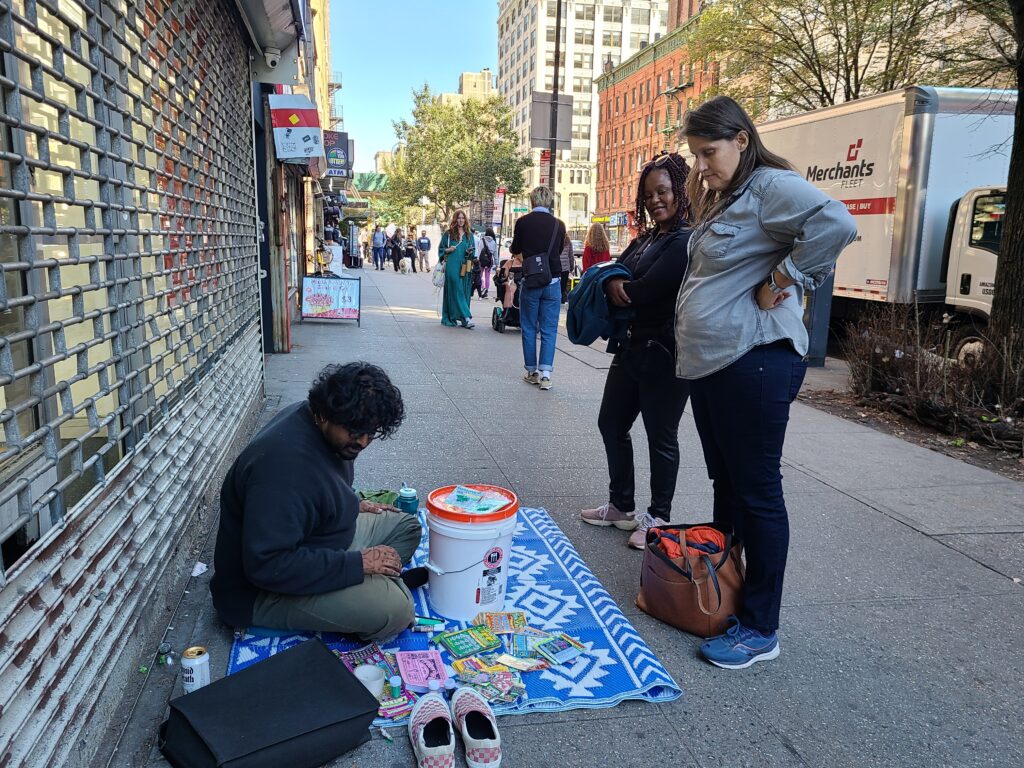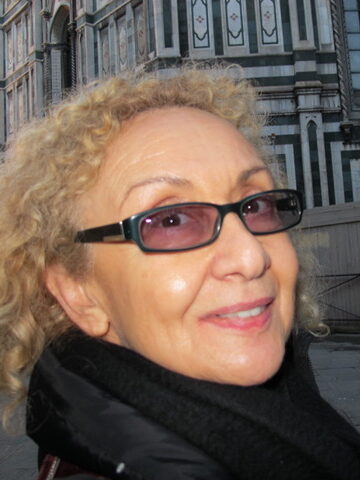Significant Moments
By Katya Grokhovsky
Art in Odd Places (AiOP) has always been about the unexpected for me, an encounter, a stumbling upon a fleeting gesture of ephemeral activation and thoughtful propositions for the contemporary urban environment. Ever since I moved to NYC in 2011, I have been aware of the festival and from volunteering as a performer to participating in it as an artist several times, to curating in 2018, I have come full circle to take up an observational role in the ongoing endeavor.
The ancient act of discovering without purpose, of aimless wonder has been somewhat stolen away from us by capitalism and the hamster wheel of hustle, in which our goals and struggles are measured by productivity and busyness. This year, a particularly poignant curatorial premise sets up a web of unexpected interwoven threads of the Personal Story becoming Universal within the public realm.

(Christopher Kaczmarek, Carry On: The Labor of our Burdens, 2022, photo Katya Grokhovsky)
As I take up my inquisitive stroll on a pleasant Saturday afternoon, I encounter a man carrying a large house-sculpture hoisted on his suited back, walking along 14th street. I am immediately propelled to instinctively hunch my back in solidarity and to ponder my own baggage within me. Christopher Kaczmarek’s Carry On: The Labor of our Burdens proposes an endurance test of keeping on whilst weighed down by the byproducts of our decisions, choices, histories, and traumas.
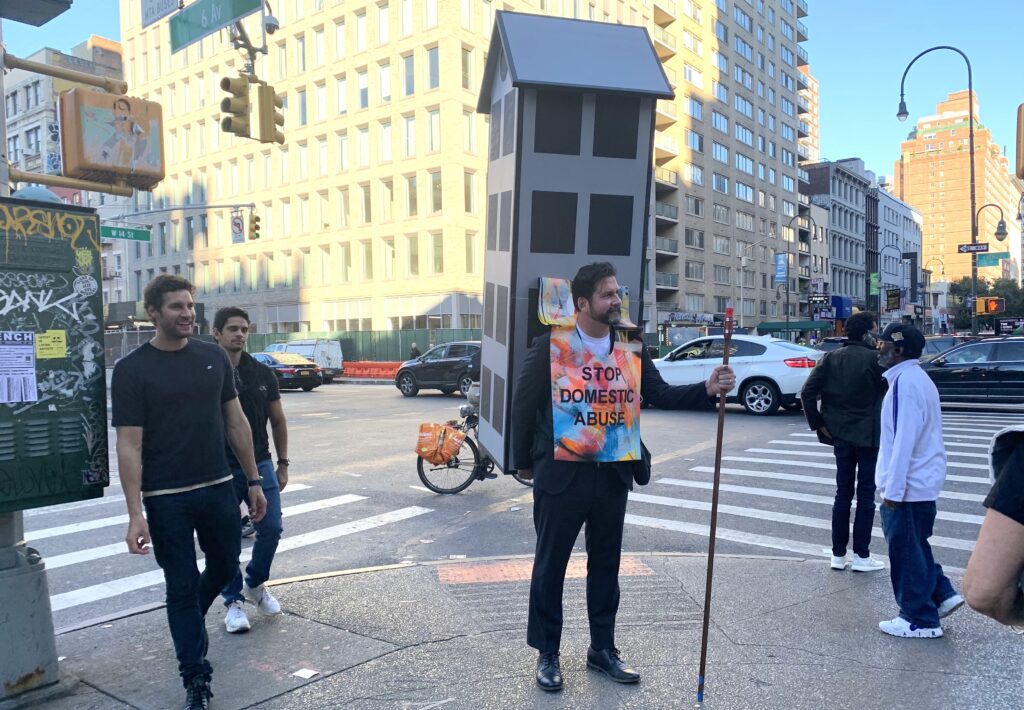
(Christopher Kaczmarek, Carry On: The Labor of our Burdens and Ana De Orbegoso, Power Vests (Feminist Projections), 2022, photo Katya Grokhovsky)
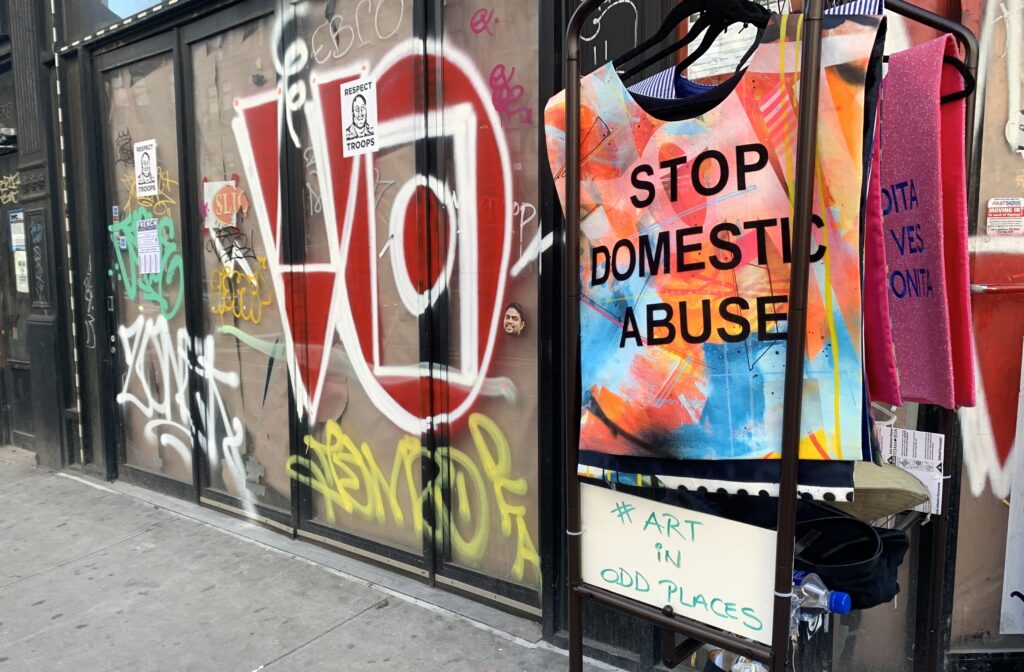
(Ana De Orbegoso, Power Vests (Feminist Projections), 2022, photo Katya Grokhovsky)
Doomed to become fully engrossed in my own reflections, I am jolted back to a new plane of meaning, when Kaczmarek collides with another artist’s project. Activating one of Ana De Orbegoso ‘s wearables from her project Power Vests (Feminist Projections), the artists’ body marries the two works, proclaiming a particularly jarring statement about abuse within a domestic setting. A seamless union, the works symbiotically highlight the possible hidden histories and issues, whilst taking a powerful stance.
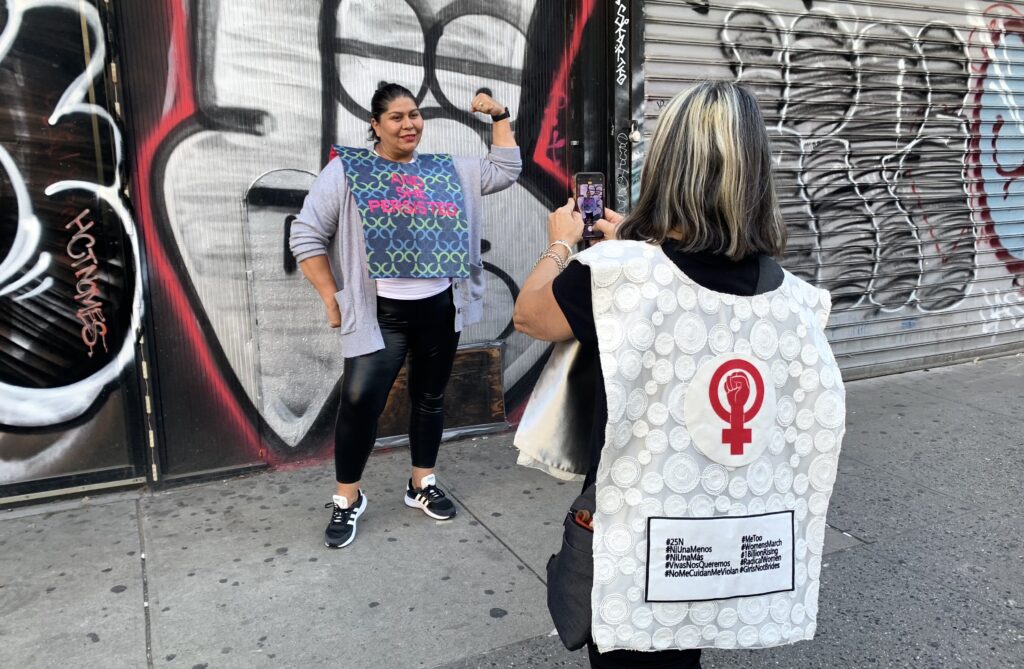
(Ana De Orbegoso, Power Vests (Feminist Projections), 2022, photo Katya Grokhovsky)
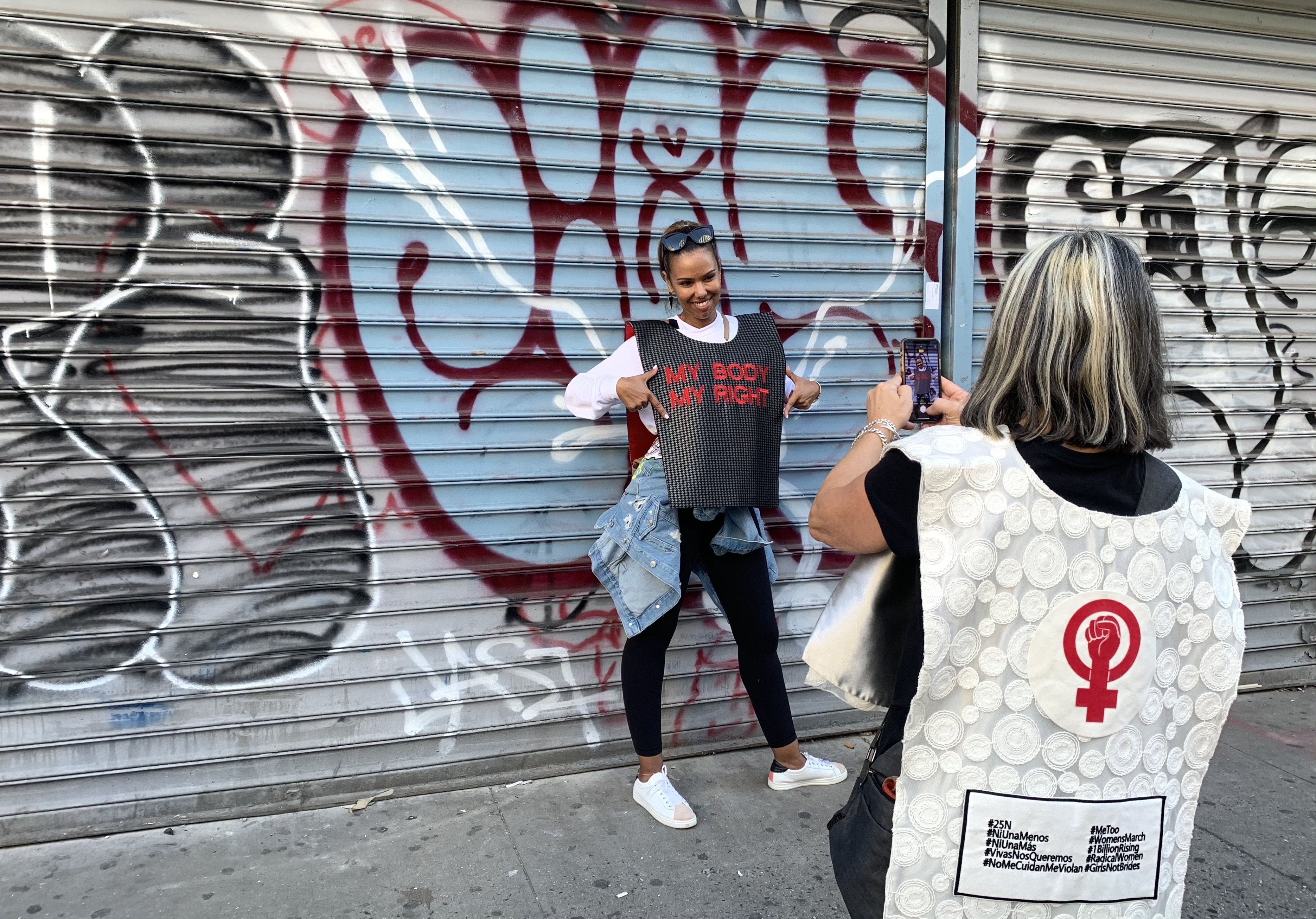
(Ana De Orbegoso, Power Vests (Feminist Projections), 2022, photo Katya Grokhovsky)
Orbegoso’s power vests engage the passerby though an invitation to make a proclamation, striking a pose for her camera, creating an instant portrait, a moment of unplanned provocation, frozen in time. Thrust into a historically feminist lineage of activism, I watch, as numerous members of the public desire to participate, staging statements of empowerment, constructing auras of resilience and ongoing struggle in support of women rights. I wish to wear one too, but am mesmerized by the action of others, who choose the vests from the available options on an open-air clothing rack, position themselves for the camera’s gaze and ultimately, act as a living reminder of the ongoing and necessary strive within our society.
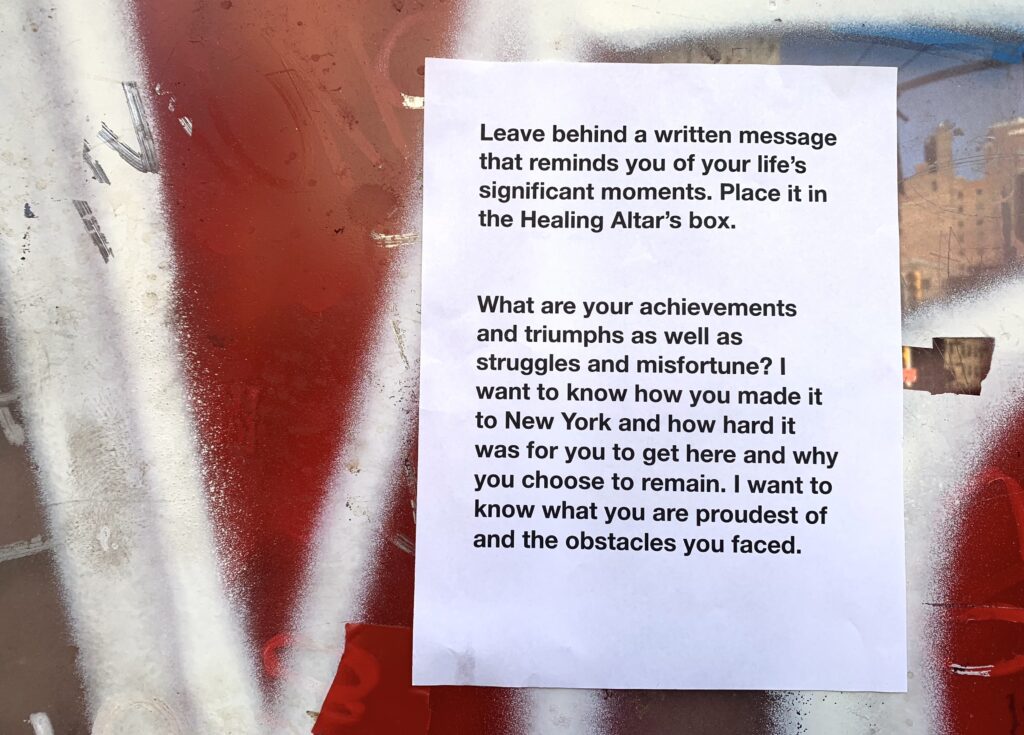
(Julia Justo, Healing Alter, Toba, photo Katya Grokhovsky)

(Julia Justo, Healing Alter, Toba, photo Katya Grokhovsky)
Next, I am invited to contribute to a participatory installation by Argentinian artist, Julia Justo, titled Healing Alter, Toba. She asks me to write down something which I consider a personal triumph or a win on a piece of small paper and place it in a box in front of a handmade form of an altar. A box of fixed thoughts, a deposit of a collective consciousness, merging, proposing a space of healing. I am somewhat struck by the question and the positivity of it and catch myself thinking how rare it is we are asked to take a moment to celebrate our successes, big or small. I scribble down a quick thought in one short sentence and am amazed at how a significant successful achievement, involving years of hard work and sacrifice, boils down to hurried three words. I am curious about the contents of the box and ponder the palpable absence of healing spaces around us.
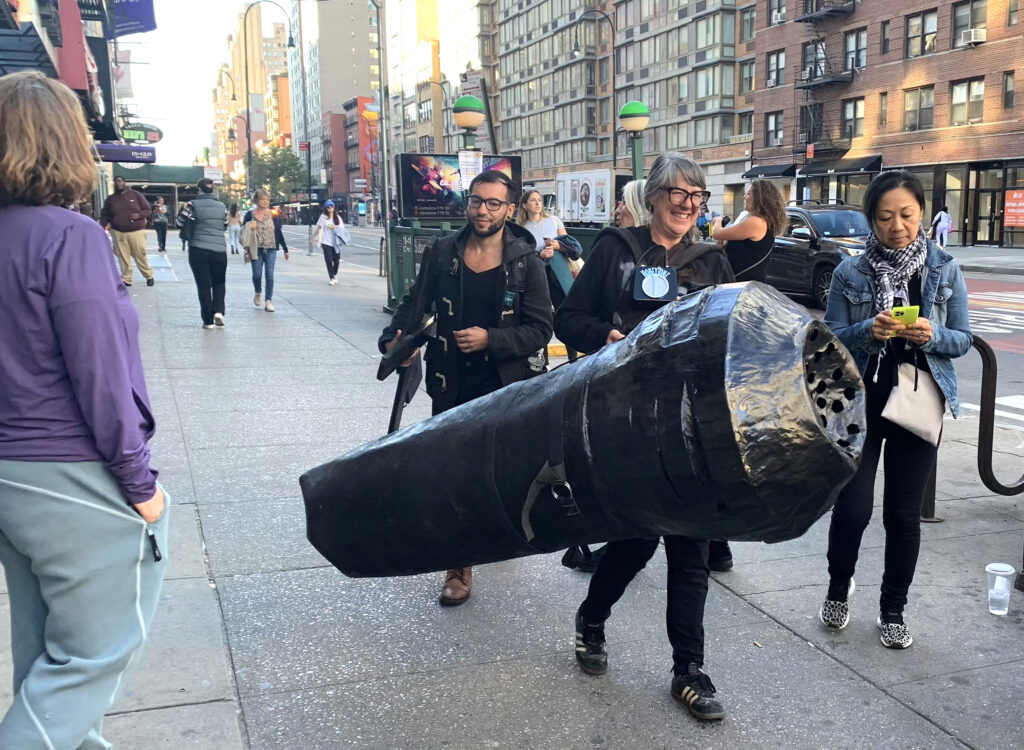
(Jane Greiner, Now Hear this, 2022, photo Katya Grokhovsky)
It is with these thoughts, I smile, as I see an oversized sculpture of a microphone, positioned to amplify. Jane Greiner’s project, Now Hear This, intends to vocalize the stories of the street, upscaling communication from possible ignorance to active listening. I imagine lines of willing participants, desiring to profess into a larger-than-life device, exploring the treasured proposal of being heard, seen, and remembered. I am compelled to thinking about the many marginalized communities, whose voices get so often drowned by the prevailing noise of systematic patriarchal oppression and dominant supremacy.
I talked to AiOP artists, thinking about the difficulties and perks of staging ephemeral artworks on the street, reminiscing of my own experiences, of endless possibilities of engagement with the public, of many learning opportunities and unexpected incidents. As my own hustle must resume and I depart to my next commitment, I carry the snippet of the overall tapestry of this year’s AiOP, the concepts, and stories, realizing how starved we are for a two-way communication. Let’s listen, pay attention, and hear each other, as we march on within the daily cacophony of our existence.
Born in Ukraine, Katya Grokhovsky is a New York-based artist and Founding Director of The Immigrant Artist Biennial. She received an MFA from the School of the Art Institute of Chicago, a BFA from Victorian College of the Arts and a BA in Fashion from Royal Melbourne Institute of Technology. Grokhovsky’s work has been supported through numerous residencies including EFA Studio Program, Sculpture Space, SVA MFA Art Practice AIR, Pratt Fine Arts AIR, MAD Museum Studio Program, BRICworkspace, Ox-BOW Residency, Wassaic AIR, Santa Fe Art Institute, Watermill Center, and more. She has been awarded the New American Fellowship, Brooklyn Arts Council Grants, ArtSlant Prize among others.
https://www.katyagrokhovsky.net


